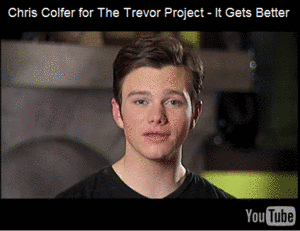Any growing tolerance of a person’s right to his or her own sexuality that is evidenced in the mainstream culture has yet to impact the Lord of the Flies scenarios that exist for gay, lesbian, bisexual, transgendered, or questioning students in many schools across the country—something that is comically but bitingly portrayed in the Fox hit series, “Glee.”
Proof that modern student life in America is not a Rainbow coalition comes from several areas, including a 2009 survey of 7,261 middle and high school students that found that nearly 9 out of 10 LGBTQ students experienced harassment at school in the previous year. Almost two-thirds (60%) said that they felt unsafe at school because of their sexual orientation and 40% said they felt unsafe because of how they expressed their gender; 40% were physically harassed at school within the past year and about 20% were physically assaulted.
Further, Dr. Elise D. Berlan of Nationwide Children’s Hospital in Columbus, Ohio, and her colleagues recently found that in a study of more than 7,500 adolescents, gay males were twice as likely to report being bullied and mostly heterosexual males were almost 1.5 times as likely to report being bullied, as compared to straight males (J. Adolescent Health 2010; 46: 366-71). Their findings among LGBTQ young women were similar. Dr. Berlan and colleagues advised doctors who are taking care of gay and bisexual youth to ask about teens’ experiences with violence and bullying, probe how they were doing with those experiences, and try to determine if there is anything that could be done to support them.
Tragically, gay teen suicide and suicidal ideation are nothing new—I should know, I tried my best to find a way out as a gay 17 year old. But a recent spate of highly publicized gay teen suicides, noted even by Secretary of Education Arne Duncan, has catalyzed a remarkable grassroots movement that may provide a new tool for doctors to help at-risk gay teens cope, especially in those bleak hours when no one seems to notice, much less counsel them.
Importantly, the movement speaks the language that they may best accept and understand—the voices of gay men and women, beloved celebrities from their favorite TV shows and movies and iTunes downloads telling them “It Gets Better.” The campaign uses the social media in which these teens are already immersed—YouTube, Twitter, MySpace, Tumblr, SocialVibe—and includes a 24/7 hotline staffed by trained counselors ready to take on the tough questions and sorrows of troubled gay teens when there may be no one else around.
If you are not of a certain (young) age, a hopeless lover of musical theater and schmaltz, gay, or just nostalgic for high-school glee club, or have a child in any of those categories, you may not be aware of one of the movement’s new poster boys, Chris Colfer.
 |
On October 5, Colfer, a 20-year old out gay actor who plays a 16-year old gay teen on “Glee,” released a public service announcement for The Trevor Project, a LGBTQ youth support organization. Although the Project has been around since 1998, their involvement in the “It Gets Better” campaign has stuck a chord, making it more relevant than anything going in today’s world for pointing at-risk gay teens to the support they desperately need.
Emmy-nominated Colfer, who plays Kurt Hummel, an effeminate, bullied, yet triumphantly out gay glee-club “loser,” is perhaps the most popular gay youth icon on the planet today. On his Twitter page which has more than 318,000 followers, he was asked in late September if he would do a video for the Trevor Project; he tweeted back that it was in the works. His PSA hit YouTube on Oct. 5 and rapidly became one of the most tweeted and retweeted PSAs in the project’s history—so much so that it became the face of the project’s website and has a YouTube hit count of nearly 300,000 views (in less than 3 days online), far above that of Daniel (THE Harry Potter) Radcliffe, a Trevor Project supporter who happens to be straight. If you are into comparative battling, the hit count for Radcliffe’s YouTube PSA hovers around 38,000.


